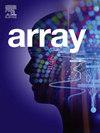FLRF: Federated recommendation optimization for long-tail data distribution
IF 2.3
Q2 COMPUTER SCIENCE, THEORY & METHODS
引用次数: 0
Abstract
Recommendation systems play a crucial role in real-world applications. Federated learning allows training recommendation systems without revealing users’ private data, thereby protecting user privacy. As a result, federated recommendation systems have gained increasing attention in recent years. However, The long-tail distribution problem of federated recommendation systems has not received enough attention. A small number of popular items receive most of the users’ attention, while a significantly larger number of less popular items receive feedback from only a small portion of users. Existing federated recommendation systems usually train on datasets with a long-tail distribution, which can easily lead to over fitting on a small number of popular items, reducing the diversity and novelty of recommendations and causing popularity bias. This paper proposes FLRF, a Federated Long-tail Recommendation Framework, which consists a long-tail recommendation model based on disentangled learning and a long-tail-aware aggregation method based on the attention mechanism. The long-tail recommendation model utilizes the idea of disentangled representation learning to explicitly disentangle the attractiveness of items into fame and niche. The long-tail-aware model aggregation, performs global attention aggregation on the model parameters of the fame part and self-attention aggregation on the model parameters of the niche part. We conduct comparative experiments on the three real-world datasets against the baseline methods in terms of accuracy and novelty. The experimental results show that the proposed framework can improve the diversity and novelty of recommendations without significantly impacting recommendation accuracy.
FLRF:针对长尾数据分布的联邦推荐优化
推荐系统在实际应用中起着至关重要的作用。联邦学习允许在不泄露用户隐私数据的情况下训练推荐系统,从而保护用户隐私。因此,联合推荐系统近年来获得了越来越多的关注。然而,联邦推荐系统的长尾分布问题并没有得到足够的重视。少数受欢迎的项目获得了大多数用户的关注,而大量不太受欢迎的项目只获得了一小部分用户的反馈。现有的联邦推荐系统通常在具有长尾分布的数据集上进行训练,这很容易导致对少数热门项目的过度拟合,降低了推荐的多样性和新颖性,并导致流行偏差。本文提出了联邦长尾推荐框架FLRF,该框架由一个基于解纠缠学习的长尾推荐模型和一个基于注意机制的长尾感知聚合方法组成。长尾推荐模型利用解纠缠表征学习的思想,明确地将物品的吸引力分解为名气和利基。长尾感知模型聚合对名气部分的模型参数进行全局关注聚合,对小生境部分的模型参数进行自关注聚合。我们在三个真实世界的数据集上与基线方法在准确性和新颖性方面进行了比较实验。实验结果表明,该框架可以提高推荐的多样性和新颖性,但不会显著影响推荐的准确性。
本文章由计算机程序翻译,如有差异,请以英文原文为准。
求助全文
约1分钟内获得全文
求助全文

 求助内容:
求助内容: 应助结果提醒方式:
应助结果提醒方式:


